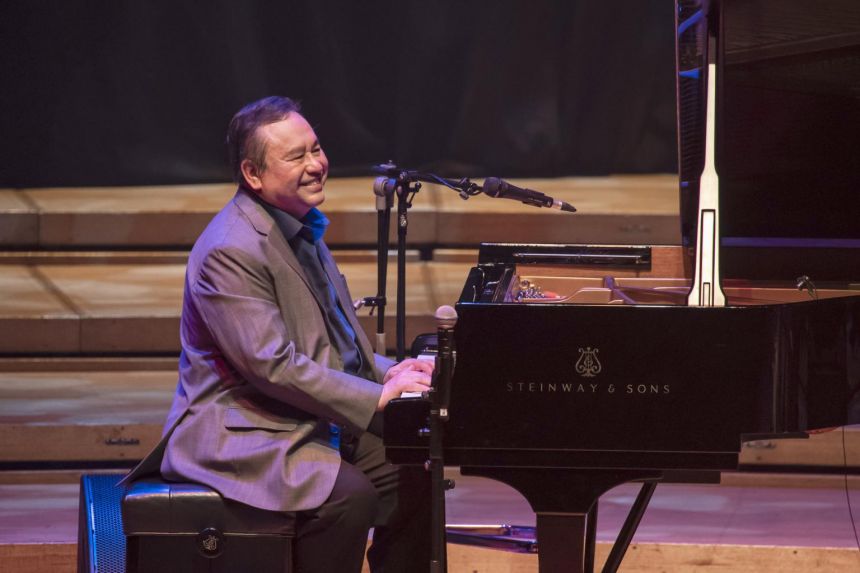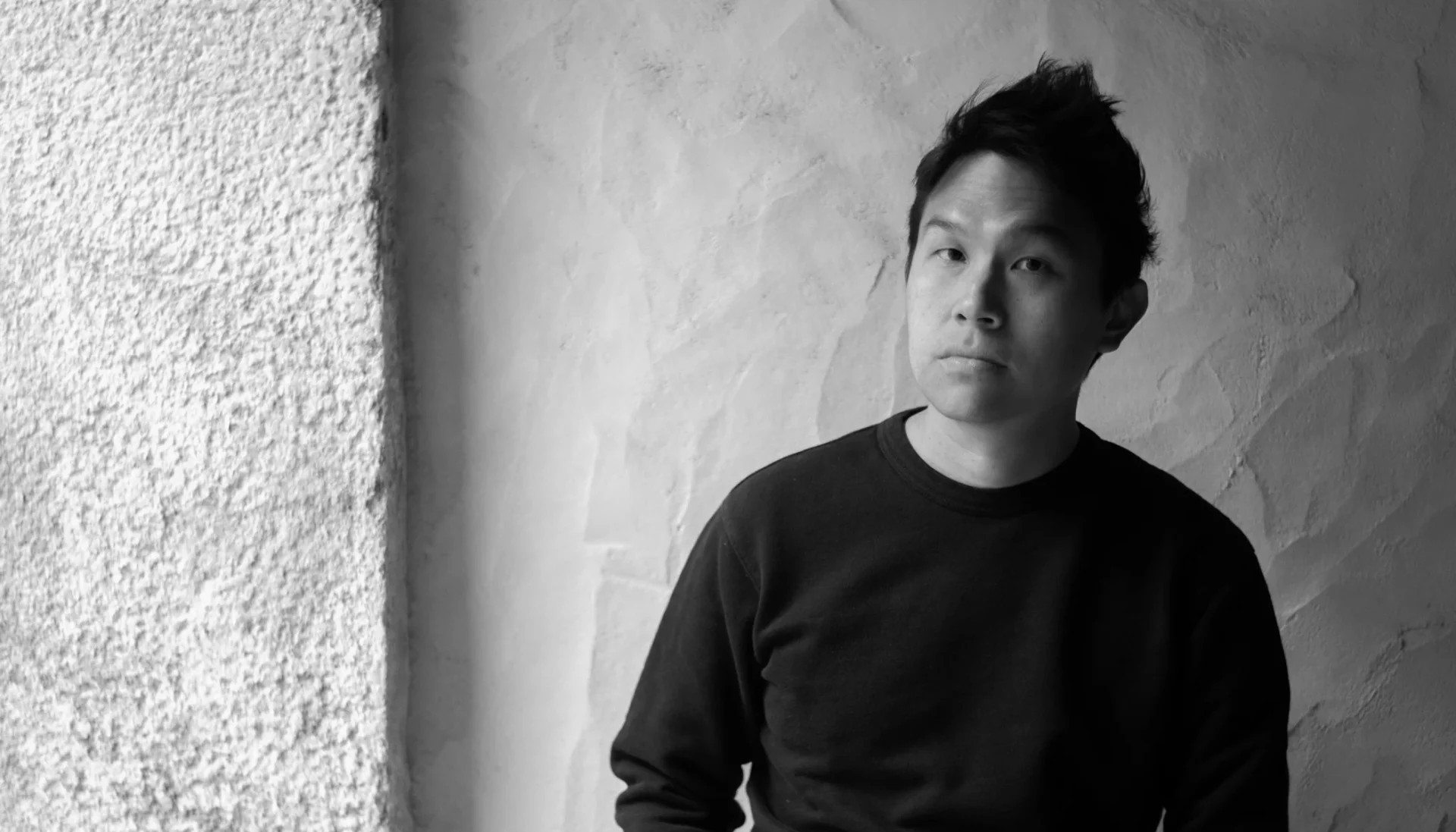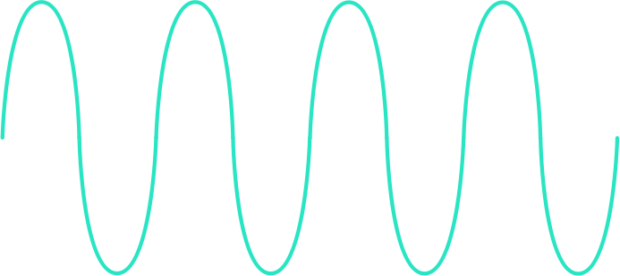Words By Chang Tou Liang
In classical piano trios of the 18th century, there was no doubt who the boss was. The violinist and cellist of Haydn and Mozart’s piano trios provided back-up to the keyboardist, usually the composer himself, by doubling his lines or playing accompanying bass and decorative figurations. It seemed that way too in Jeremy Monteiro’s latest trio concert. Bassist Ben Poh and drummer Soh Wen Ming walked on stage in near darkness, before the lights came on as Singapore’s King of Swing strode to the grand piano. Everyone knew their stations, and so it seemed.
It was Jeremy who opened with an improvisation in Dave Brubeck’s ‘In Your Own Sweet Way’. After establishing mood and rhythm, bass and drums entered the mix. Jazz improvisation is a curious art, a combination of spontaneity with pre-arranged routines. What proportion of which takes place is only known to the players, but the secret is to make everything sound freshly conjured at the spur of the moment. The trio made Brubeck’s classic their own, leaving the original distant in the memory.
The theme from the Flintstones (the Hanna Barbara stone-age family) by Hoyt Curtin will be familiar to most. Soon after the melody was heard, it underwent transformation. What remained was the driving rhythm from Soh’s drums over which variations were piled on successively. A final reprise of the original theme brought this livewire to a close.
It was time for Jeremy to sing, and he revealed to the audience the reality of Covid antigen pre-testing. He had to obtain a negative swab to guarantee non-infectiousness. It was a small price for pay but well worth it as he shared two songs which his father sang to woo his mother. Chris Smith’s ‘I’m Confessing I Love You’ and Jimmy McHugh’s ‘I’m In The Mood For Love’ were crooned with an insouciant tenderness which only he knew how. There were more keyboard acrobatics than singing, but he showed he meant every word of it.
Speaking about the pandemic and circuit breakers, Monteiro admitted this to being his third gig in a lean time, and having worn long pants only for the tenth time in many months. Creative juices nonetheless flowed in his new pandemic piece ‘Boogaloo Hullabaloo’. A commentary on all the fuss, it was characterised by a frenetic rhythm and pace set by Soh on the drums. More contemplative was ‘Life Goes On’, a much older piece also written at a time of loss, crisis and self-reflection. Here, Poh’s bass provided the melody. It was good to see Jeremy’s partners coming into their own and exhibiting great chemistry with him.
The most exuberant number was the late-lamented Chick Corea’s ‘Spain’, performed as a tribute. It was at the 1988 Montreux Jazz Festival when Jeremy and the American legend (who perished from cancer in February) appeared on the same stage. There was the iconic quote from Joaquin Rodrigo’s ‘Concierto de Aranjuez’ to begin, merely the prelude to the highly kinetic Cuban rhythms that followed. There was also a quote from ‘As Time Goes By’ (Casablanca), possibly a response to ‘Life Goes On’ that preceded, before and all-out full-blooded jamboree to its conclusion.
‘Carousel In A Child’s Mind’, was written for Jeremy’s now grown-up son (also a clinical psychologist) when he was a toddler. Essentially a waltz, its whimsical and child-like character was captured to perfection. An hour and a half had passed seamlessly, and it was time to depart. As Poh and Soh exited, Jeremy was left on his own to offer as encore a mash-up of John Lennon’s Yesterday and Imagine, bringing a close to a highly enjoyable but solid session of intense music-making.
In conjunction with the show, Jeremy graciously provided some notes on the nuances of Jazz and his journey through the world of music.
Let’s talk a little about how you got started on the piano. Did you have piano lessons with a teacher, who got you playing the classics like Bach, Beethoven and their lot?
When I was six, my parents started me on classical piano lessons with a Ms Kwek who lived down the street in Pasir Panjang. My most influential piano teacher was Tan Tze Tong in Kita Kinabalu, Sabah where we lived for three years. He was the first teacher who could clearly illustrate on the keyboard everything he was trying to teach me, from articulation to expression. He laid the foundation for me to develop good phrasing, the bridge between craft and art which we all struggle to cross.
About jazz, one cannot be instructed exactly how to swing or jive. I imagine much of your jazz was self-taught, by experimenting on chords, trying out variations and sequences on the piano. Was that how you got started?
Nowadays, one can study how to play or compose jazz up to doctorate level. However the “inventors” of jazz based their playing on the music of their African forebears blended with early classical training. Some managed to assimilate different musical traditions such as Jelly Roll Morton, WC Handy and Buddy Bolden. The person who developed a cogent way to play this music, and credited as the father of modern jazz, was Louis Armstrong. The form he “invented” in 1927, that of playing the melody, followed by a series of soloists one after another is still largely in place today.
Many do not realise that jazz playing is based strictly on the rules of Western classical musical theory and harmony. The difference between jazz and classical musicians is likened to two great orators, one who reads or memorises a prepared speech, and the other who expounds from a cue card and then dives deep into his vocabulary, knowledge and storytelling. Having seriously studied both classical music and jazz for decades, I can say that both require much discipline and study. Much of jazz is also learnt aurally. A jazz musician, although trained in sight reading, learns with his ears rather than with his eyes.
Swing is a genre to its own, but the feeling of swing is to be found in all musical genres. One way I express the feeling of swing is, “to sound at the very instant it is meant to be sounded. Not a moment too soon or a moment too late”. This feeling of swing was best articulated to me by the words of Mozart, “The music is not in the notes but in the silence in between”. To me, a well-played Mazurka (Polish peasant dance) swings like hell!
Did you have any idols among the great jazz pianists? Were there some legends whom you liked to emulate?
My first heroes in classical piano were Daniel Barenboim (I watched his instructional shows on television) and Dennis Lee, whom I saw in person in Kota Kinabalu when I was a young boy. I was blown away.
When I started on jazz, my first hero (and one for many years) was Oscar Peterson. Much later, I learned about subtlety and beautiful phrasing from listening to Bill Evans. I also delved deeply on the music of Herbie Hancock and the recently departed Chick Corea. The pianist I listen to most today is Keith Jarrett, especially his jazz trio. One of my pre-concert rituals is to listen to the Keith Jarrett Trio, centering myself and “washing my ears” until about an hour before I come on. My own thoughts and ideas will find their place in my psyche after listen to Keith.
Most jazz pianists start their trade by playing in dark, smokey jazz clubs, lounges and dives. Only the crème de la crème get invited to big festivals and play in concert halls. What was your journey from jazz club to concert stage like?
The beauty about being a jazz musician is that through careers, we go between the “hole-in-the-wall” clubs and the large stages, and all points in between. Hirers are also used to paying us anything from $500 (sometimes less in the really small clubs) to five-figure fees for festivals and concerts. I love doing them all. I once played two shows at the EFG London Jazz Festival, first with one band at the small but lovely Ronnie Scotts club on one night, and with my trio at the Queen Elizabeth Hall at Southbank on another. I am glad to be able to freely move between different kinds of venues.
The 1988 Montreux Jazz Festival in Switzerland was said to have been your “big break”, something which also put Singapore onto the global map of jazz artistry. Do you remember how you got invited, how and what you felt at the festival itself?
It was kismet that got me on to the main stage of the 1988 Montreux Jazz Festival. Festival Founder Claude Nobs happened to be dining at the now-defunct Saxophone Bar and restaurant (Cuppage Terrace) and my album was playing on the stereo. He asked the owner Fabrice de Barsy, “Who is this pianist?” and the rest was history. I still remember pinching myself after my show, which came just after Chick Corea’s set, as I could not believe that I was the lucky beneficiary of such a synchronous confluence of events that got me there.
A jazz pianist may be heard in many settings, such as in solo recitals, trio concerts, jazz band concerts as well as in concertos with symphony orchestra. All of these are different. Which do you hold most closely to your heart?
As much as I greatly enjoy all the different configurations, the piano trio with bass and drums comes closest to my heart.
Saturday evening’s concert is a trio concert, where you are accompanied by a bassist and drummer. You mentioned that such events require more hours of preparation as compared with big band concerts. Care to elaborate?
With the larger configurations, there is usually a sharing of duties. Pianistically, I put in the most time for solo recitals (which happens rarely, the last being ten years ago), playing a concerto type piece and the jazz trio. There is less in terms of stamina and agility practice for big bands or other orchestra shows that are not piano focused. Although one has to practise hard for quintet, sextet or another small ensemble shows, we pass on the baton in those ensembles. In solo or piano trio work, the responsibility falls most greatly on the pianist.
What advice would you give a listener who is new to jazz concerts?
I think for someone new to jazz, the initial contact should be non-cerebral, as the stimulus is visceral and emotional. Later on, intellectual and theoretical understanding can catch up. Classically-trained musicians (particularly composers who have attended my classes) begin to understand that the knowledge of modes like the Dorian or Phrygian are used by jazz musicians while performing the same way as when a composer starts to write an orchestral piece.
There is a very high level of respect between the top classical and jazz musicians because they understand the great amount of discipline needed for both genres. In fact, there are few “freaks” like André Previn or Wynton Marsalis who have won Grammys for both jazz and classical genres.
Stay up to date with Jeremy Monteiro via jeremymonteiro.onuniverse.com.
Discover more amazing musicians in our Music section.







